Peter Ablinger:
From Inside Out (2004)
Setup
Ein Schaufenster. Draußen ein Mikrofon. Drinnen ein Lautsprecher, der die Geräusche von draußen nach drinnen überträgt: als Mono-Signal. Der Blick geht von innen nach außen (dh. das Stück ist für den Blick von innen nach außen, nicht umgekehrt). Der Blick beobachtet die Vorgänge draußen und vergleicht/synchronisiert sie mit den nach innen projizierten Klängen. Die Synchronisierung scheint im ersten Moment zu gelingen wie gewohnt, und daher unreflektiert zu bleiben. Erst beim näheren Draufeinlassen bemerkt man daß etwas nicht stimmt. Das, was nicht stimmt, ist eigentlich nur die fehlende räumliche Information im Audio-Signal (mono!) gegenüber den räumlichen Bewegungen im Visuellen, also dessen, was durch das Schaufenster gesehen wird. Das Verhältnis von Bild und Ton wirkt plötzlich "wie" synchronisiert, die Synchronisation funktioniert nicht mehr wie gewohnt: nämlich unbemerkt, sondern wird als Bewußtseinsleistung spürbar.
Setup: A display window. Outside a microphone. Inside a loudspeaker that transmits the noises from outside to inside: as Mono signal. The view goes from inside to outside (therefore, the piece is for viewing from inside to outside, not contrariwise). The view observes the process outside and compares/synchronises them with the sounds projected inside. At first, the synchronisation seems to work as usual and one remains unreflecting upon it. Only at a closer look does one notice that something is wrong. That what is wrong is actually only the spatial information missing from the audio signal (Mono!) compared with the visual spatial movements, i.e., that which is seen through the display window. The relationship between image and sound suddenly appears "as" synchronized; the synchronisation doesn't function as usual anymore: i.e. un-noticed, but is perceived as a function of consciousness. (english translation edited by Gabriel Santander)
Schaufenster, Berlin, Potzdamerplatz,
Studien zu: "From Inside Out"
Photos: Maria Tržan
Praktische Notiz: Um die Differenz zwischen "Stereo"-Bild und Mono-Klang wirksam werden zu lassen, benötigt das Schaufenster eine gewisse Breite. Auch soll die visuelle Gegebenheit vorrangig die Links/Rechts-Bewegung und weniger die Fern/Nah-Achse betonen.
Practical Note: The display window should not be too narrow in order to make the difference between "Stereo"-image and Mono-sound tangible. Also the given situation should rather emphasize the left/right movement than the distant/near axis. (engl. un-edited)
...Was wir REALITÄT nennen, stützt sich im Wesentlichen auf die Kohärenz unserer Sinneswahrnehmungen (George Pennington). Das heißt, daß zwischen unseren Sinneswahrnehmungen ein Bestätigungszusammenhang herrscht; unsere Augen MÜSSEN bestätigen was unsere Ohren hören...
see also:
> SCHAUFENSTERSTÜCK (Quadraturen IIIe)
for display-window, microphone and computer-controlled piano
> Echtzeit (Instruments &)
for a display-window or any other situation in which a cello-player and audience are separated by a window
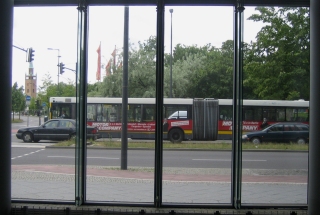

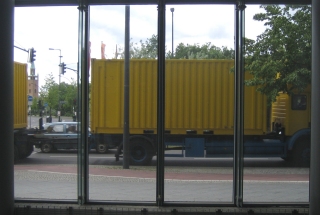
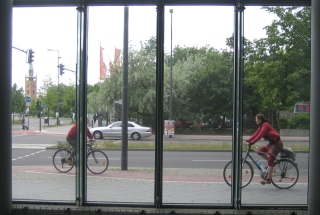
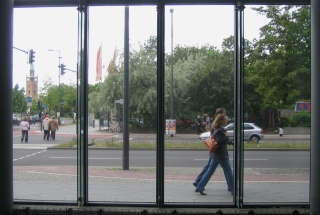
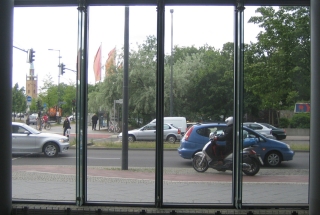






 Aljoscha Hofmann \ last edited 31.10.2007 CET
Aljoscha Hofmann \ last edited 31.10.2007 CET